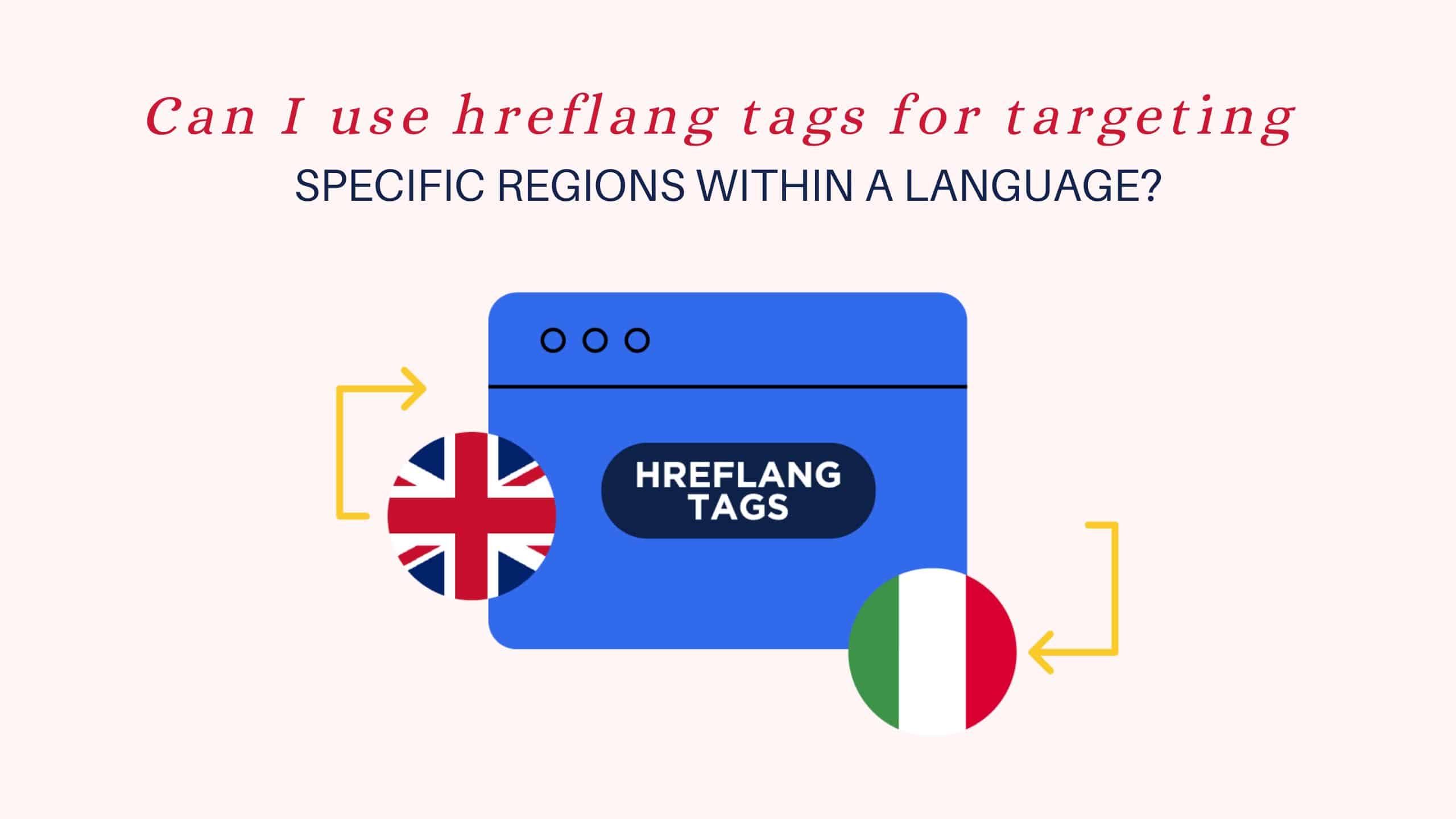Yes, you can use hreflang tags to targeting specific regions within a language. Hreflang tags allow you to specify both the language and optionally the region of your website’s alternative versions, providing more precise targeting for international audiences. This is particularly useful when you want to tailor your content to specific regions that share the same language but have cultural or regional differences.
Here’s how you can use hreflang tags to target specific regions within a language:
Language Targeting:
Hreflang tags primarily serve the purpose of language targeting. You can use them to indicate different language versions of your webpages.
For example:
<link rel="alternate" hreflang="en" href="https://www.example.com/en/page">
<link rel="alternate" hreflang="fr" href="https://www.example.com/fr/page">In this example, the hreflang tags specify the English and French language versions of the webpages. The language codes follow the ISO 639-1 standard, which represents specific languages.
Region Targeting:
To target specific regions within a language, you can extend the hreflang tags to include region codes. Region codes adhere to the ISO 3166-1 Alpha-2 standard and represent specific countries or regions.
Here’s an example:
<link rel="alternate" hreflang="en-US" href="https://www.example.com/en-us/page">
<link rel="alternate" hreflang="en-GB" href="https://www.example.com/en-gb/page">In this example, the hreflang tags specify the English language versions of webpages targeting the United States (en-US) and the United Kingdom (en-GB). By including region codes, you can provide a more targeted experience for users within those specific regions.
Combined Language and Region Targeting:
You can also combine language and region codes in hreflang tags to achieve more granular targeting.
For example:
<link rel="alternate" hreflang="fr-FR" href="https://www.example.com/fr-fr/page">
<link rel="alternate" hreflang="fr-CA" href="https://www.example.com/fr-ca/page">In this example, the hreflang tags specify the French language versions of webpages targeting France (fr-FR) and Canada (fr-CA). By using both language and region codes, you can cater to the linguistic and cultural preferences of specific regions within a language.
Country-Specific TLDs:
In addition to using hreflang tags, another approach to target specific regions within a language is by using country-specific top-level domains (TLDs). This involves registering separate domain names for each targeted region.
For example:
example.comfor the global version of your website.example.frfor the French version targeting France.example.cafor the French version targeting Canada.
Using country-specific TLDs can help search engines understand the geographic targeting of your website. However, it requires additional resources and maintenance, as each domain needs to be managed separately.
Content Localization:
When targeting specific regions within a language, it’s important to consider content localization. Localization involves adapting your content to the linguistic, cultural, and regional preferences of the target audience. This includes using region-specific vocabulary, currency, measurements, and references.
Hreflang tags alone do not handle content localization. They primarily signal the language and regional targeting to search engines. It’s essential to provide tailored content for each language and region combination to enhance user experience and improve the effectiveness of your targeting efforts.
Search Engine Support:
It’s important to note that while hreflang tags provide a signal to search engines about language and regional targeting, they do not guarantee that search engines will always display the desired language or region-specific version in search results. Search engines consider various factors when determining which version to display, including user location, search query intent, and relevancy.
To maximize the impact of your hreflang tags and improve search engine support, follow these best practices:
- Ensure consistency between hreflang tags and the actual content of the alternative versions.
- Use accurate language and region codes following ISO standards.
- Test and validate your hreflang implementation using tools like the Google Search Console‘s International Targeting report.
- Monitor your website’s performance in search results and make adjustments as necessary.
Hreflang tags allow you to target specific regions within a language by specifying both the language and region codes. By using hreflang tags effectively and considering content localization, you can enhance your website’s visibility and provide a tailored experience for users in different regions sharing the same language.





